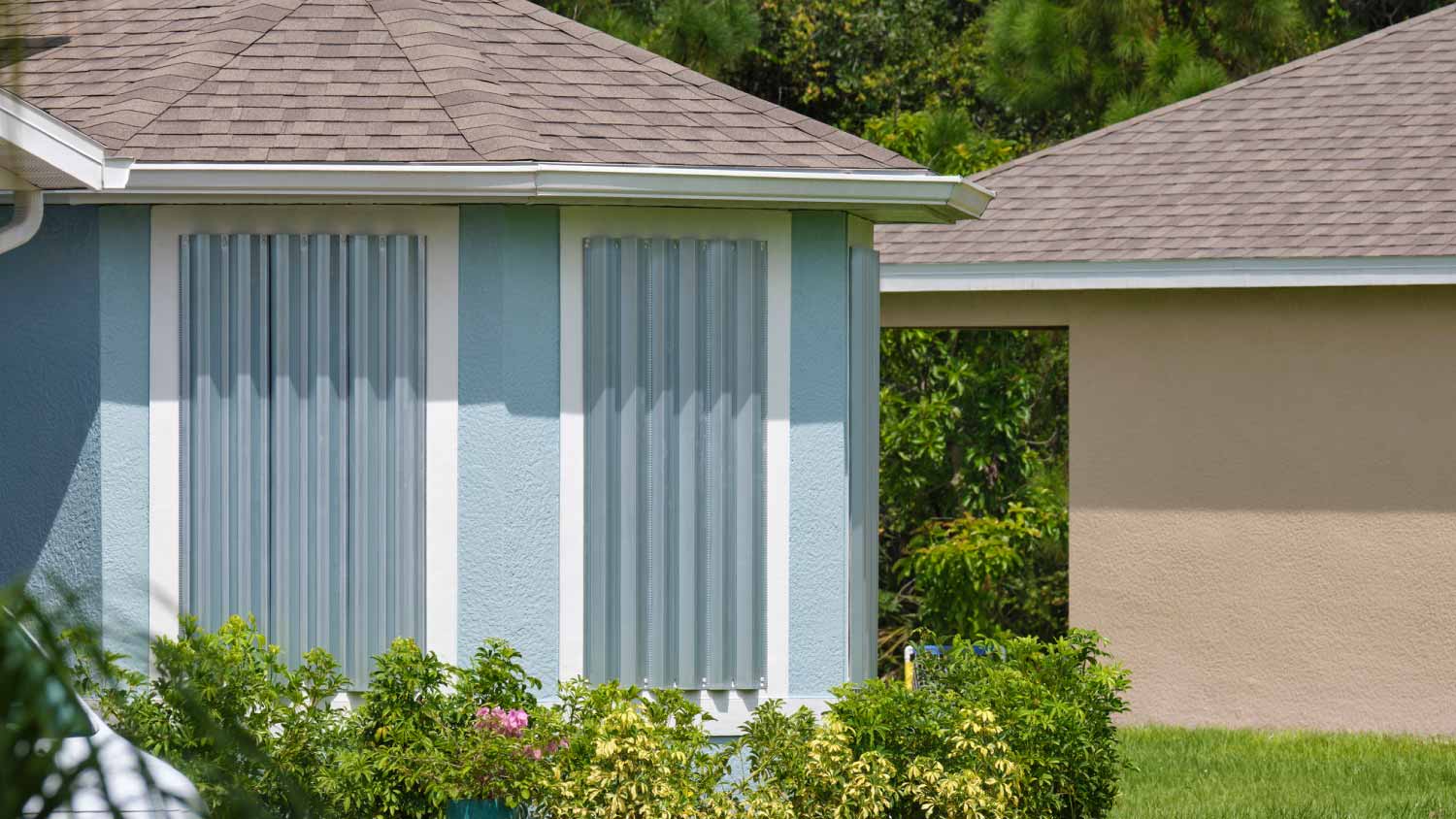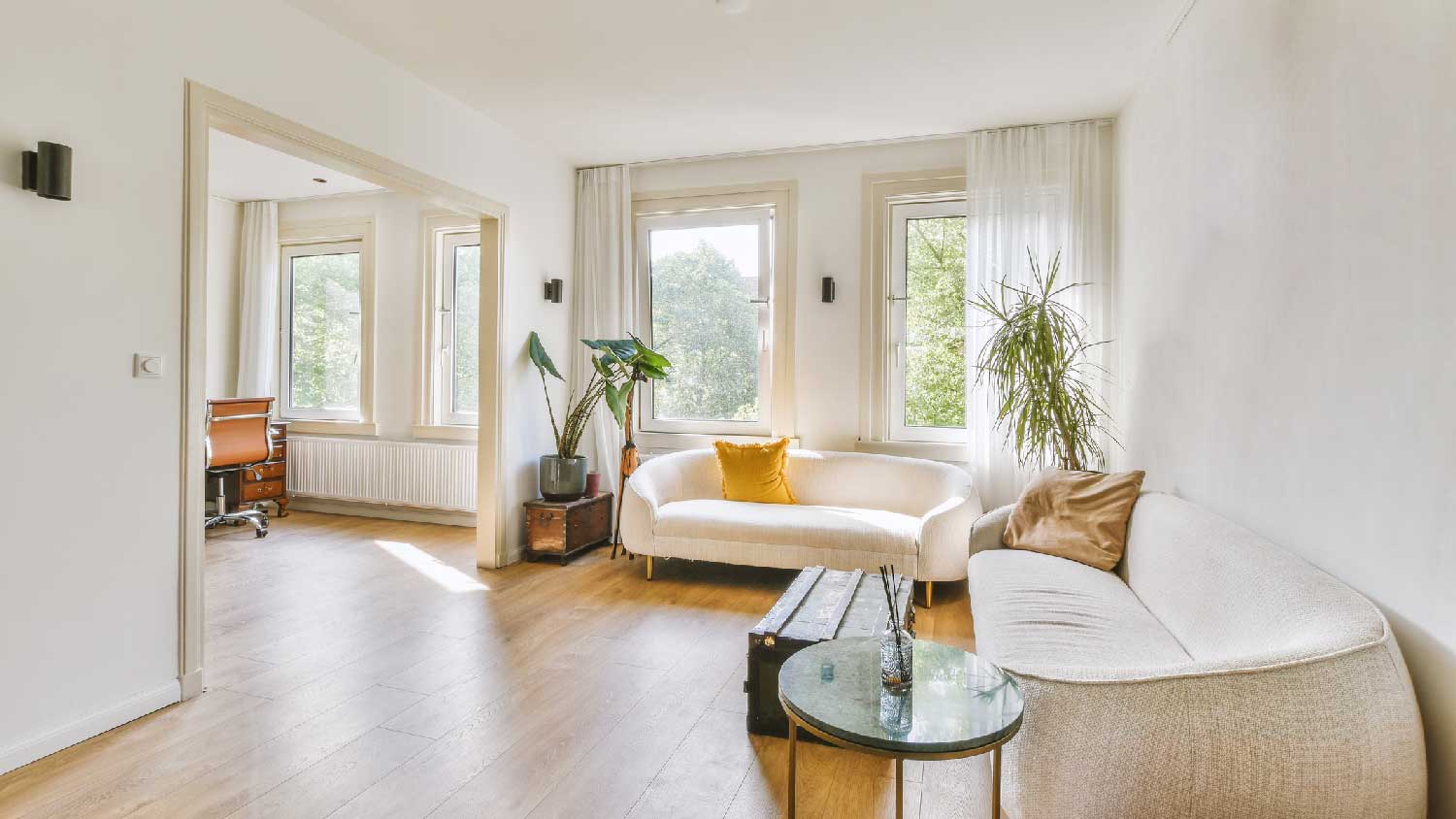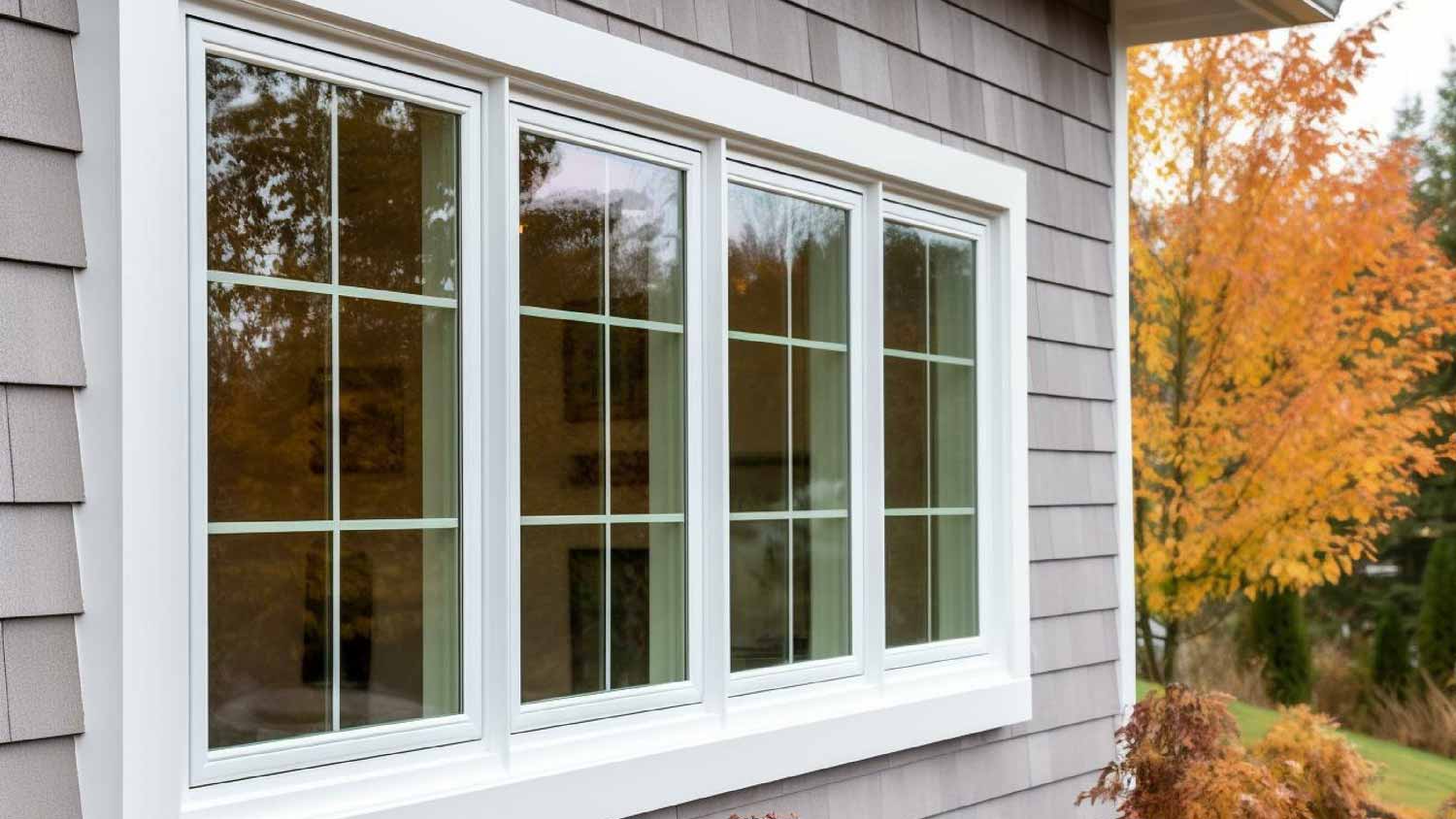Hurricane Fabric Installation: Your Ticket to a Safer Home During Storms
There’s no such thing as being over-prepared for hurricane season


- Hammer drill (for concrete)
- Standard drill (for wood)
- Drill bits
- #2 and #3 Phillips bits
- Sharp industrial scissors
- Hurricane fabric panels
- Clips
Hurricane fabric installation is a modern, excellent approach to protecting your windows during a hurricane. You can install hurricane fabric yourself or hire a professional. If you choose to take a crack at it, check out our guide below. With just a few items, you can follow these seven steps and add an extra layer of defense to your home’s windows.
Prepping to Install Hurricane Fabric
Before beginning your hurricane fabric installation, consider the damage a hurricane can cause to your home through its weakest spots and openings, including windows, doors, and garage doors. Then, gather your tools and supplies from the list above. From there, start measuring the openings using the directions below.
Measure Your Openings
 Photo: Imagesbybarbara / iStock / Getty Images Plus / Getty Images
Photo: Imagesbybarbara / iStock / Getty Images Plus / Getty ImagesFor standard concrete openings, use a tape measure to get the width and the height. For door measurement, overlap the left side, right side, and top by 4 inches. Use the same process for garage doors, verandas, and sliding glass doors. When it comes to windows, add 4 inches to every side. This process means you’ll add 8 inches to both the width and the height.
If there’s trim or decorative molding around your window or door, measure enough past it to allow 4 inches of fabric against the wall. When it comes to standard wood-framed homes, you’ll need to place your anchors at the center of the 2-by-4 framing. To do so, measure 1 inch past the buck opening on each side. This process will add 2 inches to both the width and the height.
Keep in mind that you’ll attach the fabric on the two longest sides of your openings, meaning it will go on the tops and bottoms of spaces like garage doors and patio enclosures.
Cut the Fabric
 Photo: Mint Images / Mint Images RF / Getty Images
Photo: Mint Images / Mint Images RF / Getty ImagesIf your hurricane fabric isn’t precut, lay it out on a cutting surface. Using your sharp industrial scissors, trim the fabric to the correct measurements, allowing for the overlap recommended above. You can also use a precision knife to cut your hurricane fabric.
Remove the Screws
When installing hurricane fabric over a window, first remove the existing screws from the anchors around the first window using a power drill. Identify the screws first, and work with one opening at a time. You’ll want to store the screws for later use.
Install the Clips
 Photo: CreativeI / E+ / Getty Images
Photo: CreativeI / E+ / Getty ImagesCheck which sides of your opening will need clips. If you need to attach the fabric to the top of the opening, start there. Otherwise, start on the left side. Mark 2 inches from the corner, then mark the other clip positions along that entire side. Repeat these steps for the other sides that need to be attached.
Space clips apart using the proper clip spacing designated in your region. Most guidelines state that clips should be 12 inches apart. Attach the first clip, then slide the fabric between the pieces until the edge is even with the first notch. Then, reinstall the screws you removed earlier to keep the clips in place.
Drill and Hang the Fabric
Attach the top corners of your hurricane fabric first. Attach the screws by hand until all screws are in place, then attach the rest of the screws along every side, and tighten them with the cordless screwdriver. Make sure that you don’t overtighten.
Center your hurricane fabric over the opening. Using your permanent marker, mark the upper left-hand corner. Drill a hole in that spot using your power drill. Use the driver bit to install the anchor into the hole, then fasten the fabric on that side. Pull the fabric across the opening, then mark the clip placement on the other side. Continue installing and marking all remaining anchors.
Leave an Exit Point
Hopefully, you’re getting the hurricane fabric installation done with plenty of time to spare before the next storm is supposed to hit. If so, don’t forget to leave an exit point open so you can easily come and go until it’s time to hunker down or leave the area. Keep an eye on the weather reports and install the fabric on your exit point as the storm gets closer to your location.
Remove, Store, and Clean Up
Once your hurricane fabric has been installed, mark it with an opening number to remember placement for next time. When it’s time to take it down, remove the fabric and place it in a storage bag. Clean your hurricane fabric, if necessary, with mild soap and water, then let it air dry. Make sure it’s completely dry before placing it in a storage bag.
DIY vs. Hiring a Pro
While hurricane fabric installation is something you can DIY, you may want to hire a professional to save time and ensure it’s done correctly. Safeguarding your home in advance can help save money on repairing structural damage, cleanup, and more. Consider calling a local hurricane shutter pro who can install hurricane shutters to provide even more protection to your windows. A pro can help you choose the right materials and options for your house and the weather in your area.
Frequently Asked Questions
Hurricane fabric is a temporary form of hurricane protection that offers an alternative to boarding up windows or installing traditional storm panels. Unlike hurricane screens, which are permanently attached to your home, hurricane fabric is installed over your windows and the openings in your home before a storm.
Hurricane fabric is more protective and durable than hurricane window film, which adds a lesser layer of insulation and little protection. Additionally, learning how to board up windows for a hurricane is easier than installing hurricane fabric, but it’s more labor-intensive and requires storing heavy plywood on-site.
Hurricane fabric is tested and proven to protect homes from Category 5 hurricanes (which can reach over 157 miles per hour). When installed properly over windows, doors, and other openings, it’s intended to block the majority of the wind and rain from a hurricane and protect against water, debris, and projectile damage.
Some windows with hurricane fabric can break if hit directly by flying debris at a high velocity during a hurricane. That said, hurricane fabric is exceptionally durable. While you’re always at risk of glass breaking during a hurricane, the fabric tends to be a good option for taking protective measures against an impending storm.
To increase the chances of your windows surviving a hurricane, learn how to hurricane-proof your home with additional steps like securing outdoor items, elevating HVAC units off the ground, and fortifying the foundation.




















